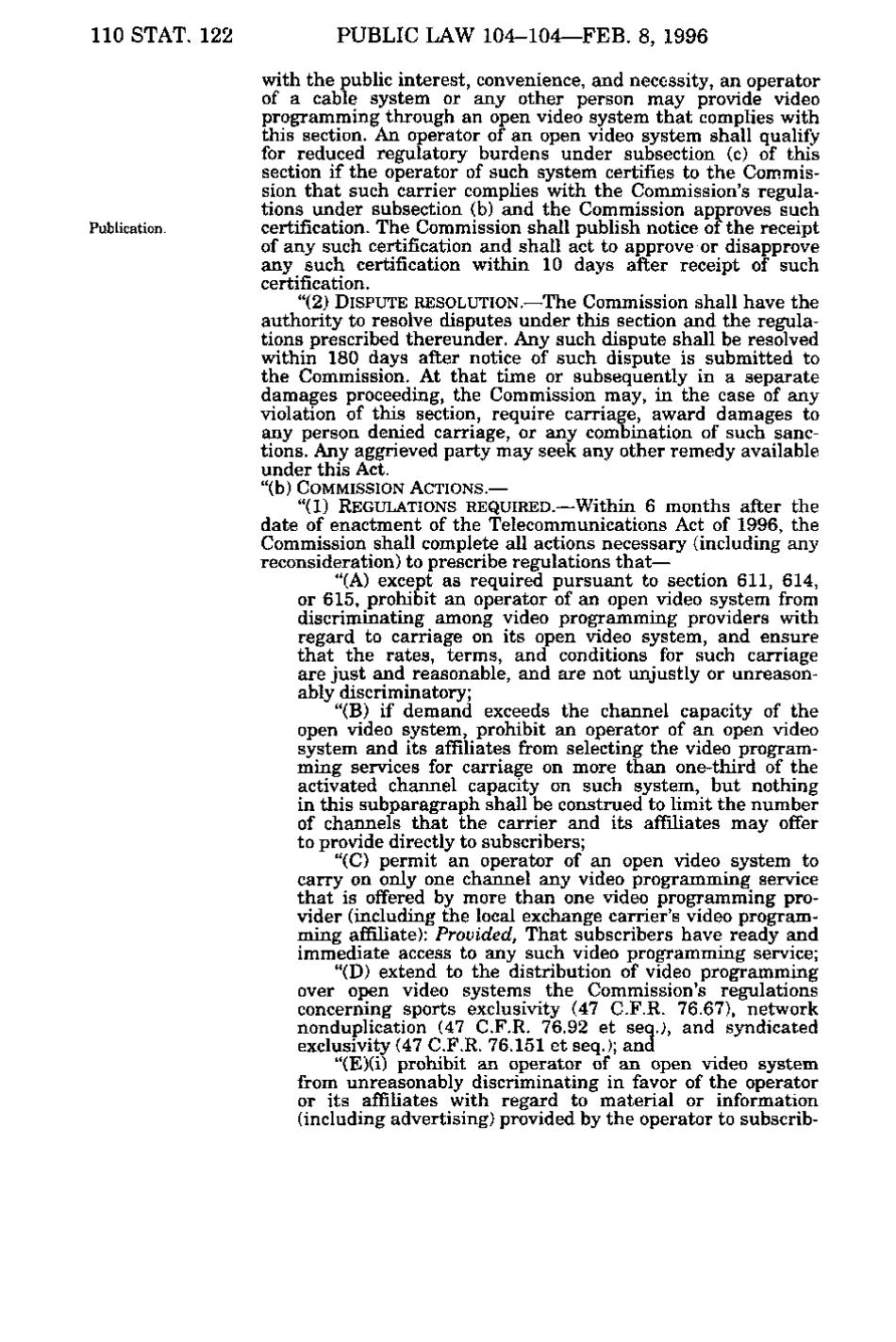110 STAT. 122 PUBLIC LAW 104-104—FEB. 8, 1996 Publication. with the public interest, convenience, and necessity, an operator of a cable system or any other person may provide video programming through an open video system that comphes with this section. An operator of an open video system shall qualify for reduced regulatory burdens under subsection (c) of this section if the operator of such system certifies to the Commission that such carrier complies with the Commission's regulations under subsection (b) and the Commission approves such certification. The Commission shall publish notice of the receipt of any such certification and shall act to approve or disapprove any such certification within 10 days after receipt of such certification. "(2) DISPUTE RESOLUTION.—The Commission shall have the authority to resolve disputes under this section and the regulations prescribed thereunder. Any such dispute shall be resolved within 180 days after notice of such dispute is submitted to the Commission. At that time or subsequently in a separate damages proceeding, the Commission may, in the case of any violation of this section, require carriage, award damages to any person denied carriage, or any combination of such sanctions. Any aggrieved party may seek any other remedy available under this Act. " (b) COMMISSION ACTIONS. — "(1) REGULATIONS REQUIRED. — Within 6 months after the date of enactment of the Telecommunications Act of 1996, the Commission shall complete all actions necessary (including any reconsideration) to prescribe regulations that— "(A) except as required pursuant to section 611, 614, or 615, prohibit an operator of an open video system from discriminating among video programming providers with regard to carriage on its open video system, and ensure that the rates, terms, and conditions for such carriage are just and reasonable, and are not unjustly or unreasonably discriminatory; "(B) if demand exceeds the channel capacity of the open video system, prohibit an operator of an open video system and its affiliates from selecting the video programming services for carriage on more than one-third of the activated channel capacity on such system, but nothing in this subparagraph shall be construed to limit the number of channels that the carrier and its affiliates may offer to provide directly to subscribers; "(C) permit an operator of an open video system to carry on only one channel any video programming service that is offered by more than one video programming provider (including the local exchange carrier's video programming affiliate): Provided, That subscribers have ready and immediate access to any such video programming service; "(D) extend to the distribution of video programming over open video systems the Commission's regulations concerning sports exclusivity (47 C.F.R. 76.67), network nonduplication (47 C.F.R. 76.92 et seq.), and syndicated exclusivity (47 C.F.R. 76.151 et seq.); and "(E)(i) prohibit an operator of an open video system from unreasonably discriminating in favor of the operator or its affiliates with regard to material or information (including advertising) provided by the operator to subscrib-
�
